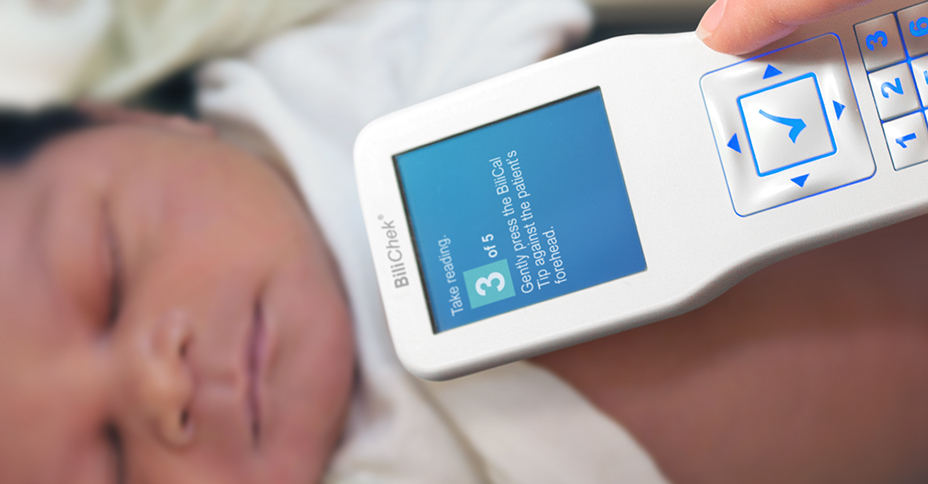
This bilirubin infant screening device is used to analyze newborns for high bilirubin levels. Its noninvasive optical technology measures skin coloration and calculates bilirubin levels without the need to draw a newborn's blood or order an expensive laboratory test. With this device, a healthcare professional can quickly and efficiently assess a newborn's health and make immediate treatment decisions on the spot. The device includes a barcode scanner, so the operator can swiftly enter important data by scanning bracelets, badges, or printed labels, and the backlit keypad can be used to navigate the interface and enter information when barcodes are unavailable. HL7-compliant electronic records are automatically created and uploaded to the hospital's network.
Respironics Children’s Medical Ventures (now, Philips Healthcare) involved us in this project from inception through manufacture and we played many roles throughout the development process. Early research phases with pediatric nurses and their supervisors involved in-context observation, soliciting feedback about current tools and workflows, and eventually included sharing physical prototypes and interface demos for evaluation and feedback. Volumes of user input were categorized, prioritized, and prepared for the design phase in the form of personas and key design criteria. Great attention was given to the industrial design of the keypad and the ergonomics of the grip area while adhering to very specific client-driven design goals. Using 3D-printed rapid prototypes, our industrial design team was able to quickly and effectively create full-scale models for evaluation while preserving the very important real-world link between the look and feel of the device and important assembly and engineering constraints. The user interface was designed to include easily understood on-screen prompts and instructions along with bold, high-contrast information important for everyday use. The entire interaction workflow was detailed and diagrammed for software development and implementation and includes easily navigated and configured system and device settings and embedded help prompts providing the user with on-screen notifications and reminders for successful, proper use of the device. This holistic, complete development approach eased the transition from design to engineering and ensured the greatest, most efficient means of preserving the integrity of all of the important aspects of both the industrial design and mechanical engineering throughout the entire process.